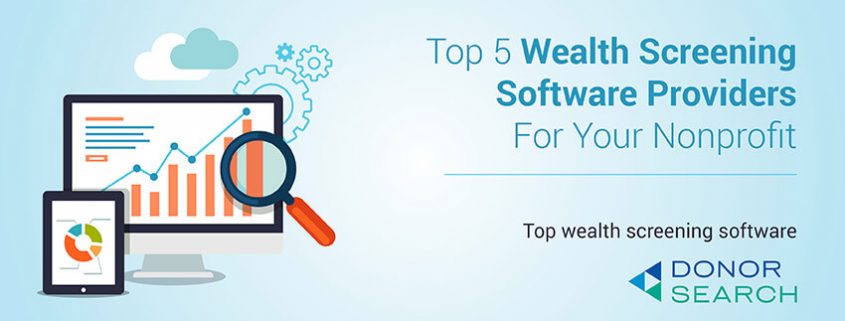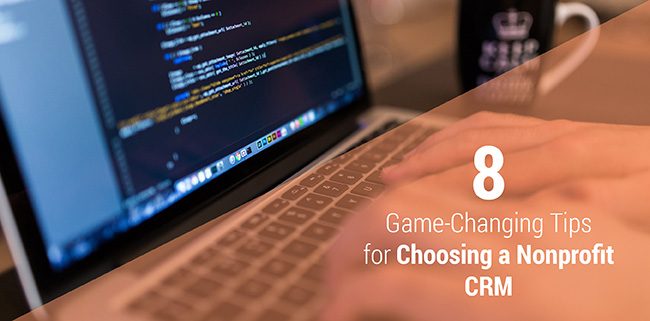8 Ways Mobile Fundraising And Crowdfunding Go Hand-In-Hand
by Kate WhiteGuest post compliments of @Pay.
The boombox. What a revolution, right? All of a sudden, music became portable in a way that it never had before and shareable in a whole new dimension.
We all remember the swell of emotions that flooded our hearts when John Cusack’s character lifted that iconic boombox above his head in Say Anything.
But the impact of that gesture might not have been as grand had he lifted, say, a tiny mp3 player over his shoulders.
Regardless, technology has marched on, and yesterday’s boomboxes (grand gestures and all) have given way to sleeker, more portable devices.
These new devices allow users not only to have access to everything their hearts could ever desire but also to be able to share that content with anyone at the speed of light.
BONUS: Run a Successful Crowdfunding Campaign by Using Our FREE Ultimate Guide to Crowdfunding! You'll love the tips and recommendations!
How can mobile fundraising revolutionize crowdfunding the way mp3’s changed the way we share music?
Below we have four of the top ways that mobile fundraising has changed crowdfunding for the better:
- By helping the on-the-go donor give
- By reaching out to a younger audience
- By meeting people where they give
- By giving the option to update whenever, wherever
And here are the four ways that crowdfunding has enhanced mobile fundraising:
- By extending the social networks of nonprofits
- By creating easy-to-understand visual incentives
- By making nonprofit videos more trendy and shareable
- By offering unique benefits to contributors
Read on to discover how to give your fundraising ideas a little boost with mobile.
#1. By helping the on-the-go donor give
In the few-and-far-between quiet moments we have to ourselves, most people fill their time by browsing the internet on their phones. If you look around, you’ll see 90% of people looking at their tiny screens:
- On the train, subway, or bus
- At lunch or dinner
- During meetings
- At any given grocery store, gas station, or doctor’s office
- Really anywhere you would have previously had downtime or alone time
It’s hard to argue that there would be a better use of that on-the-go browsing than donating to charity.
Why not make your crowdfunding campaign that much more accessible for the on-the-go giver?
When you’re planning your mobile crowdfunding campaign, make sure you keep in mind the keys for asking for donations of any kind.
And definitely make sure that your mobile donation page is as responsive on a phone as it is on a laptop. This means that:
- Your buttons should be larger.
- There should be less text and more pictures.
- Your crowdfunding videos should be short and to the point.
These points are by no means the only factors to consider. Mobile-responsive and mobile-friendly websites come in all shapes and sizes.
The one thing they have in common: they all work on-the-go.
Takeaway: Crowdfunding campaigns can reach significantly more donors by being mobile-friendly.
#2. By reaching out to a younger audience
We all know that millennials are practically glued to their phones. And the generation coming up underneath them will never have known a time without smartphones.
Don’t miss out on a key demographic because your crowdfunding campaign doesn’t have a shareable component.
Instead, give younger donors mobile-ready urls to share on their various social media platforms:
-
- Twitter. Remember to keep it short but sweet. Tweets are 140 characters or less.
- Facebook. Pictures and brief videos work best. Long posts are not shared as often.
- Instagram. Make sure you provide links to your crowdfunding page in your description.
- Tumblr. You can post longer, more in-depth content. Deeply engaging, thoughtful content gets picked up readily here.
Giving mobile donors the option to share their donation experience on social media not only leads to repeat donors; it also spreads the word about your campaign to more people.
According to studies done on Facebook post interactions, photos get 53% more likes, 104% more comments and 84% more click-throughs on links than text-based posts.
Luckily, the top mobile fundraising platforms that host crowdfunding sites automatically give the option to include a picture, video, or other visual component to your campaign’s shareable link.
Takeaway: Strategize smarter by being platform-specific. Images are worth a thousand words on most websites today.
#3. By meeting people where they give
One of the most crucial pieces of information you need to gather about your donors is giving preference.
Some people, you’ll find, will prefer to use desktop computers or laptops to donate, some will still write checks and mail them in.
Increasingly, though, people are choosing to donate on their mobile phones. The more engaging, accessible, and mobile-responsive your crowdfunding campaign is, the more likely you are to reach your goal…and quickly!
It’s been shown that if a crowdfunding campaign reaches 30% of its goal within the first week, it’s far more likely to be successful in the end.
What faster way is there to connect than through instantaneous social media sharing, texting, and mobile-friendly emailing?
Within mobile fundraising, there are so many different giving avenues.
You can strengthen your crowdfunding campaign’s reach by incorporating:
- Text-to-give
- QR code promotions
- Email donation buttons
- Mobile-responsive donation pages
- And so much more!
When you diversify your approaches with mobile giving, you end up reaching people exactly where they are.
Takeaway: Incorporate all different types of mobile fundraising to help your crowdfunding campaign reach more donors where they are.
#4. By giving the option to update whenever, wherever
When planning to launch a successful crowdfunding campaign, you don’t want to go the full John Hughes right at the outset. You need to build to that point.
The best way to engage an audience without overwhelming them is to:
- Share carefully-timed mobile-ready emails
- Push periodic updates across several platforms (Facebook, Twitter, etc.)
- Remember that people want to read personable stories
- Keep in mind that everyone likes to feel like they’re a part of something greater–and even better, something somewhat exclusive. Make your donors feel like they’re a part of the coolest club in town!
Mobile fundraising technology can now help your crowdfunding campaign reach donors wherever, whenever. You can update everyone in a matter of moments.
It’s one of the touchstone features of mobile giving campaigns and a huge reason why text-to-give initially took off. Mobile giving first became well-known during the aftermath of the Haiti earthquake in 2010.
As part of the fundraising effort following the devastating disaster, a text-to-give campaign was born.
Those wanting to help, no matter the time of day or how far from Haiti they were, could text a specific keyword to a defined number. Then, the donor’s cell phone bill would be charged $5 or $10, and the money from those charges went to help Haiti.
That “give from wherever, whenever” mentality is part of the DNA of mobile giving.
And now, your crowdfunding donors can also update from wherever and whenever they’d like.
If it’s 3 AM, and they’re on the train home, they can whip out their phone, view your crowdfunding page and instantly give $10 to your cause.
If it’s the middle of the day on a Monday, and they’re taking a break by the watercooler, they can take a moment to read about all the good work you’re doing. And they can give $25 on the spot!
Takeaway: With mobile fundraising, you can update all of your donors everywhere at a moment’s notice, and they can give back just as quickly.
Now that you’ve explored the different ways that mobile fundraising has improved crowdfunding, it’s time to look into the ways that crowdfunding has boosted mobile fundraising efforts.
In this section, we’ll take a peek at these 4 ways:
- By extending the social networks of nonprofits
- By creating easy-to-understand visual incentives
- By making nonprofit videos more trendy and shareable
- By offering unique benefits to contributors
Let’s get started!
#5. By extending the social networks of nonprofits
Crowdfunding, also sometimes known as peer-to-peer fundraising is an incredible tool for reaching out to larger networks of people.
Acquiring new donors is a major challenge common to all nonprofits, large and small. In fact, most nonprofits spend considerably more on acquiring donors than they do on retaining existing donors.
There’s one simple way to gain new followers, increase your donor pool, and make a greater impact: launch a mobile crowdfunding campaign.
Peer-to-peer fundraising involves leveraging your existing donor base to do a lot of the heavy lifting for your organization.
How does that work? Well, it’s actually really easy. Your nonprofit hands over the necessary tools to crowdfund; they solicit their social networks, families, and friends. Presto! You’ve just reached dozens more donors without putting in any extra effort.
Thanks to social media, what used to be door-to-door appeals made by your existing donors are now “share” buttons, “like” buttons, and “retweet” buttons.
It’s never been easier to get the word out and thereby increase your own social network.
#6. By creating easy-to-understand visual incentives
Crowdfunding thermometers are perhaps the most useful (and psychologically effective) means of raising money.
Thermometers are fantastic visual representations of:
- How much money you’ve already raised
- How much money you’re aiming to raise
- How much time is left in a campaign
- How many donors have contributed
- And more!
They’re psychologically effective, as we’ve said before, because they inherently entice people to donate.
Think about it. If you see that 15 people have already donated an average of $34 to a campaign, and the thermometer is a little less than halfway full, you’ll most likely feel the pull to donate and fill up that thermometer a little bit more.
How satisfying is it to see a concrete representation of your contribution?
That’s precisely how your mobile donors will feel when you incorporate a mobile-responsive thermometer into your crowdfunding page!
#7. By making nonprofit videos more trendy and shareable
When you’re planning your mobile crowdfunding campaign, it’s important to keep in mind that donors aren’t the only people you’re trying to reach. You also want to be sure that you keep potential volunteers in mind.
One fabulous way to reach both potential volunteers and potential donors engaged is through video.
Powerful videos don’t have to be long and involved. Actually, it’s better if they’re not. Short videos that get the point across in just a couple of minutes (or even 30 seconds, if you’re really creative) are the best.
Your mobile crowdfunding campaign has a much better chance of becoming viral (and therefore quickly funded) if you include a solid, shareable video along with your crowdfunding page.
Here are some traits that successful crowdfunding videos have in common:
- They’re under 3 minutes long.
- They load well on a mobile device.
- They’re well-shot and beautifully thought-out.
- They include actionable steps for the viewer to take.
- They have a central message that’s consistent with the nonprofit’s mission.
If your nonprofit adheres to these standards, you’re guaranteed to have a greater chance at a successful mobile crowdfunding campaign.
#8. By offering unique benefits to contributors
Whether you’re hosting a raffle or throwing a themed festival, you’re probably offering some kind of prize, right?
If raffles had no physical incentives, who would participate? If carnival games didn’t offer teddy bears, you can bet that fewer teens would spend their hard-earned summer job money on ring tosses.
It’s also common practice in a crowdfunding campaign to trade unique benefits commensurate with the level of each gift.
Say, for instance, that you’re raising money for your local animal shelter. If you’re using a mobile-responsive crowdfunding page, you can:
- Offer 1 hour of puppy playing time in exchange for a $25 donation.
- Trade personalized, handmade leashes in exchange for a $50 donation.
- Give away organic, gluten-free dog treats in exchange for a $75 donation.
- Make up your own incentives! Whatever works for your nonprofit!
The better the benefits, the more likely people will be to donate. Of course, not every benefit has to cost money for your organization (and shouldn’t). Get creative with the goods and services you offer, and you’re sure to see your donations spike!
—–
Thanks for tuning in and sticking with us through these 8 points. We hope you learned a thing or two about crowdfunding and/or mobile fundraising!
How has mobile fundraising improved your crowdfunding efforts? Have you noticed an increase in donations when you’ve made your donation pages socially shareable?
Likewise, have you incorporated crowdfunding into your mobile fundraising efforts? How has it worked for your nonprofit? We’d love to hear from you! Comment below to respond.
12 Refreshing Summer Fundraising Ideas
by Kate WhiteBONUS: Get 99 refreshing summer fundraising ideas with our free PDF! Download our resource to print and share with your colleagues.
Let’s be honest, asking people for money is difficult. Really, really difficult.
What’s even worse? Asking grumpy people for money.
Donors are much more receptive to asks when they are in good moods. Whodathunkit?
So take advantage of the happiest season of the year — summer!
Summer is a great time to engage with donors. The sun is shining, the weather is good, and daylight lasts forever.
It is a season that beckons people outside, so heed the call. That’s why we’ve complied a list of our favorite summer fundraising ideas:
- Launch a crowdfunding campaign
- Host a block party
- Host a pool party
- Organize a water balloon fight
- Coordinate a car wash
- Host a fish fry or barbecue
- Run a walk-a-thon, bike-a-thon, or swim-a-thon
- Host a wine tasting
- Cater a dinner or host a gala outdoors
- Run a summer golf tournament
- Organize an outdoor concert
- Coordinate a summer film series
Use these suggestions to capitalize on the summer season and get your community outside and donating!
#1 LAUNCH A CROWDFUNDING CAMPAIGN
While crowdfunding is a popular fundraising idea for any time of the year, it’s especially effective over the summer because you can combine your online fundraiser with a live event such as a walkathon, charity concert, etc.
Additionally, creating a crowdfunding campaign is often free, making it an inexpensive fundraising tool to use during the summer (or any season for that matter).
When setting up your crowdfunding campaign, be sure to include a lot of fun visuals to help encourage your supporters to donate and share your campaign with their peers. Moreover, you’ll also need to draft a killer fundraising description that explains why you’re raising money and what communities or people will benefit from the funds.
After you launch your campaign, spread the word through social media, email, print and e-newsletters, and your local press.
#2 HOST A BLOCK PARTY
A block party is a one-stop shop for summer fun. The endless summer nights provide the perfect backdrop for a community gathering that benefits your cause!
Block Parties are what you make them so the vibe and atmosphere will be up to you.
Consider organizing some extra fundraising events to incorporate into the block party and maximize your donations.
I would suggest getting some competition brewing with a watermelon eating contest and a cook-off.
Watermelon is the perfect summer fruit, refreshing and healthy. Donors won’t feel guilty about stuffing their faces with watermelon.
Messy enough to provide a visual badge of honor for those who compete, your contest will be a highlight of the block party.
For those who find the competitive eating world unappealing give them the option of competitive cooking. A cook-off is a great complement to any block party.
Pick a summer classic, like apple pies, burgers, or chili, and get people cooking!
You can have party guests vote using a secret ballot or appoint a judging panel. Just have fun with it!
Look into getting a local chef or cooking supply shop to donate cooking lessons or a gift card to the winner.
Keep the party going late into the night and let your cause reap the financial rewards.
#3 HOST A POOL PARTY
Is a block party not cool enough for you in those hot summer months? Make it a pool party instead. Problem solved!
Pool parties are pretty straight forward. Have pool? Will party.
Just make sure you have your safety bases covered with licensed lifeguards.
Your pool party can be as extravagant as your heart desires. Set up carnival like games near the pool. Have a party-wide round of Marco Polo. Sell snacks from a concessions stand.
#4 ORGANIZE A WATER BALLOON FIGHT
Kids will join in for the fun of it and adults will join in for the nostalgia-fun of it. Establish a designated fight-zone, register competitors, and sell water balloons.
You could even make it a tournament with teams competing for a coveted prize…glory!
#5 COORDINATE A CAR WASH
Car washes are a fundraising standby for a reason. They’re a great way to raise money with little event cost.
They are also an excellent opportunity to expand awareness of your organization.
Make sure your car wash has plenty of signage stating what the proceeds are going towards. You might even want to print off some flyers or brochures to give those who participate additional info on your cause.
#6 HOST A FISH FRY OR BARBECUE
For this event you’ll have a crew of volunteers and staff manning the grill or fryers. Set up a method of ordering (online, via the phone, in person) and provide made-to-order food.
Your establishment can be take-out style or you can set up some outdoor seating.
Get kitschy if you go the eat-in route, and don’t forget the quintessential summer items like picnic tablecloths and funky plates.
#7 RUN A WALK-A-THON, BIKE-A-THON, OR SWIM-A-THON
Pick whichever of the three you think your community will be most interested and you’ll be off to the races.
Charge a small registration fee and have your participants gather sponsorships for distance walked, biked, or swam.
#8 HOST A WINE TASTING
Find an outdoor venue, get wine donated from local shops, and invite your supporters who are 21+ to pay a minor fee to participate.
People will jump at the chance to sample wine while feeling charitable.
#9 CATER A DINER OR HOST A GALA OUTDOORS
Take advantage of the beautiful weather and bring your higher-end events outside. For example, you could host a garden ball at your community’s botanical gardens.
#10 RUN A SUMMER GOLF TOURNAMENT
Golf tournaments can be very lucrative. To get started, you’ll need to partner with a local golf course and solicit your corporate sponsors and donors to buy spots in the tournament.
Your nonprofit can add a unique twist to your golf tournament by including additional games that guests can participate in. Check out this list of unique ideas to get inspiration for your fundraiser.
Once you’ve got your event planned out, advertise it by inviting current supporters and prospective donors. It’s also best to set up an online registration page where guests can RSVP, and you can communicate updates with guests directly on your dedicated events page.
#11 ORGANIZE AN OUTDOOR CONCERT
Outdoor concerts are summer staples. It doesn’t matter who the main attraction is, whether its Beyoncé or your cousin Al’s neighborhood band.
A benefit concert is all about having fun and raising money.
#12 COORDINATE A SUMMER FILM SERIES
Reserve a venue, like a park space, for 4 or 5 separate nights. Then pick out a movie for each reserved day that an entire family can enjoy.
Title your series, something like “June Movie Mondays,” and start rolling.
Make sure to advertise and let people know what the ticket sales are accomplishing. You could even sell theater concessions to create an authentic movie-going experience.
For more great information, check out our list of summer camp fundraising ideas!
Once you’ve executed a great summer fundraiser, make sure your organization is fully prepared to keep those hard earned donors.
Click here to learn more about donor retention.
And click here to learn more about donor segmentation.
Donors have more time and energy to get involved in their communities during their summers. Cement your nonprofit’s community presence by making a big fundraising push this summer. Go forth and conquer the season!

Donor Stewardship Expert Advice from 29 Industry Leaders
by Kate WhiteDonor stewardship is one of the most, if not the most, important activities a nonprofit does. That being said, it can be a tricky beast.
NonProfitEasy’s team has compiled advice from a variety of experts from the nonprofit sector on how nonprofits can perform effective stewardship for their donors.
Listen to your donors
You’d be surprised how much you can learn about your donors if you’re willing to listen! If you develop trusting relationships with your donors they’ll be the only focus group you ever need.
Amy DeVita, Chief Operating Officer at Third Sector Today and Top Nonprofits, says:
“Although I’m not personally involved in nonprofit fundraising, I’m very fortunate to get to interview some incredibly successful nonprofit leaders in my line of work! The best practice that I’ve heard time and time again: “Listen” to your donors.
At first blush, it may seem counter-intuitive that “listening” is more important than “telling,” “suggesting,” or “asking.”
But, by listening, you are letting your donor tell you how they want to be further engaged with your cause— and they will be charting the course to a successful and more meaningful relationship for you to follow.”
Vanessa Chase, Fundraising Consultant and Owner of The Storytelling Non-Profit, says:
“Survey your donors! If there’s one tip that I think can make a big difference for stewardship plans it’s to do a donor survey.
Send one annually that includes 5 to 7 questions about donor demographics and their overall satisfaction. It can provide non-profits with vital data points about their donor audience and how they can better steward their audience.”
Craig Linton, Founder of Fundraising Detective, says:
“Never miss an opportunity to get feedback from your donors. Not only does it strengthen your relationship, but it can identify common problems that you can solve to improve your donor experience.”
For more great fundraising tips, check out our ultimate CRM tip sheet!
Quality over quantity of communications
Donors who have given to multiple nonprofits are likely inundated with follow-up communications. Make yours stand out by ensuring they’re high quality and meaningful!
Kivi Leroux Miler, President of Nonprofit Marketing Guide.com, says:
“So many nonprofits send bad thank you letters – if they send them at all! Nonprofit thank you letters need to be thought of as a very important, highly strategic piece of communication.
A thank you is NOT just a tax receipt. It should look like a personal letter from one friend to another. Ditch the predictable openings like “Thank you for your gift of…” or “On behalf of our organization…” Draw in the donor immediately by placing them front and center. Something as simple as “You made my day…” is much better.
A great thank you is the first step in creating a relationship with your donor that will inspire them to give again and again.”
Tom Ahern, President at Ahern Donor Communications, says:
“A prerequisite for above-average donor retention is a well-planned, donor-centric communications program that begins with a welcome.”
Jeff Schreifels, Senior Partner at the Veritus Group, says:
“It’s sad, but just like we’ve all become accustomed to bad or mediocre customer service and we accept it, it’s the same with donors who give large, multi-year gifts. They have come to expect very little of us.
This is where you can have an advantage over other charities. Your mindset should be that because they gave a gift, I’m going to do the unexpected and cultivate them so wonderfully that they can’t wait to make their next gift.”
For more great fundraising tips, check out our ultimate CRM tip sheet!
True gratitude will make all the difference
It’s because of generous donors that your organization has the opportunity to make a difference. Make sure they know how important they are by thanking them early, frequently, and in a variety of ways.
Chris Moore, Executive Vice President of Innovairre, says:
“In today’s fundraising environment, where retention is the new acquisition, the days of having a revolving door of endless new donors are long gone!
The need to thank donors promptly and personally is more critical than ever.
After all, it’s not the first gift that’s most important – it’s the second, and first impressions count; you have to earn the right to ask again!”
Claire Axelrad, Principal at Clairification, says:
“Effective stewardship can be summed up in two words: gratitude and impact. Think hard about what you’re grateful to your donor for.
It’s not money; it’s the impact they’ve made possible. Tell them; show them.
It doesn’t matter how great your relationship is now. If you don’t demonstrate repeated gratitude and/or can’t show your donor their money is creating an impact, there won’t be much of a relationship for long.”
Joe Garecht, Founder of The Fundraising Authority, says:
“Your non-profit would not exist without your donors. So why not start treating your donors like the essential members of your team that they really are?
Your donors are the heroes of your work… your program staff and volunteers are important, but your donors are essential. Make sure they know that!”
For more great fundraising tips, check out our ultimate CRM tip sheet!
Always connect donors with your organization’s mission
A charitable donation doesn’t happen in a vacuum. Make sure your donors or potential donors know where their money is going and the difference that they’re making to your organization.
Marc Pitman, Fundraising Coach at The Nonprofit Academy, says:
“One of the most important things to do in donor stewardship is connect the donor to the mission. We need to bring donors into what my friend, Shanon Doolittle, calls these ‘mission moments.’ We often overlook these because they’re things our nonprofit is doing on a regular basis. But these are exactly what the donor is investing in. And since they’re happening on a regular basis, it doesn’t take a lot of programming or organizational inconvenience to bring donors in.
The best part? When non-fundraising staff see donors get excited about their work, the non-fundraising staff start willingly helping with the fundraising!”
Sarah Bernstein, Founder and Owner at Philanthrodata, says:
“I would suggest that in acknowledgements and reports to donors, that nonprofits emphasize what they can accomplish with and because of donors, what donors have made possible, rather than a litany of the organization’s achievements.
For example, they could talk about what it means to the people they serve to know that the community (of donors) believes in their potential and has demonstrated that by investing in their future. Also, they should pay attention to the people who pay attention to them, especially the donors who follow them in social media.”
Lomesh Shah, Founder and CEO of NonProfitEasy, says:
“Too often, nonprofits will separate fundraising activities from their ‘mission’ as an organization.
We try to encourage nonprofits to always link any monetary solicitation with a tangible outcome.
This is an easy way to show donors that their donation is making a difference and showcase process after a fundraising campaign.”
Remember to follow up, and follow up, and follow up!
Donor stewardship is not a one and done sort of activity. It’s an ongoing relationship with donors that your organization should constantly be looking to deepen, develop, and grow.
Julia Campbell, Principal at J Campbell Social Marketing, says:
“Donor stewardship does not mean just sending a thank you note and then contacting the donor again the next time you need money.
No. You need to tell donors how the gifts made an impact and continue to build the relationship with them.”
Eric Rardin, Vice President at Care2, says:
“Committing to year-round stewardship will retain current donors and recruit new repeat donors. Their funds are an extension of their faith in the organization and the missions, so remember: you’re not only stewarding their money, you’re stewarding their trust.
Care for your donors by investing in them — send a personalized thank you note; a formal, written thank you note; mid-year update; and a personalized ask the following year.”
Brian Dowling, Principal and Founder at SupportingFundraising.com and SupportingAdvancement.com, says:
“One of the most important stewardship activities are reports sent to donors on a periodic basis informing them about what has been done with their investment in your organization. “
For more great fundraising tips, check out our ultimate CRM tip sheet!
Find ways to engage donors of all donation levels
Having industry leading donor stewardship means you are engaging potential donors at all giving levels, ages, and exposures to your nonprofit. Think about the different ways your organization can find opportunities to interact with organizations of all types.
Alex Saavedra, Digital Marketing Manager at Greater Giving, says:
“Young donors are hands-on and serious about helping. The common thing among young donors is the desire to be involved—especially when working on limited budgets, the amount they care and want to participate may not be matched by how much they can give.
A donor is a long-term investment—if these donors have a positive experience with your organization when they’re young, they’ll continue donating long into the future when they have more disposable income.
Provide opportunities for young donors to get involved in other ways besides donating (such as volunteering and hosting their own local events such as a 5K).”
Bill Tedesco, CEO of DonorSearch, says:
“Prospect research can help your front-line fundraisers identify which donors have the capacity to give a major gift and a history of past philanthropy.
This will enable your development team to ensure that those major donors receive excellent stewardship to keep them engaged for years to come!”
Brian Lacy, Owner at Brian Lacy and Associates, says:
“Annuals funds are a great way to cultivate a strong pipeline of donors who have the potential to make a major donation down the line. The secret to your success in this effort will be your organization’s donor stewardship program!”
Focus on stewardship, not solicitation
Soliciting donations is only one part of donor stewardship. Make sure your communications with donors are varied so they’re receiving a diversity of information about your organization.
Farra Trompeter, Vice President at Big Duck, says:
“Celebrate your donors and make them feel like heroes. Highlight your accomplishments as theirs!
Highlight what your donors care about. Not sure what that is or why they give? Ask them via phone interviews or surveys.
Don’t just ask donors to give. Make sure to book-end any appeal with non-donation actions, updates on results, and word of thanks.”
Erik Anderson, Founder & President of The Healthy Non-Profit, says:
“Donors are not ATMs, they are people with wishes and dreams. Your job as a fundraising professional is to help people realize those dreams. You are not a mugger lurking in the shadows trying to snatch a donor’s wallet or purse. If there is one guiding principle that is paramount to all other fundraising best practices, it is treat your best donors like you would your childhood BFF.
- Check-in with them from time-to-time.
- Care about what is happening in their life.
- Put their needs ahead of your own.
- Spend time with them figuring out what they want their philanthropy to accomplish and then show them how your organization can help them accomplish their goals and dreams.
The more personal you can make your cultivation, solicitation, and stewardship interactions, the stronger your relationship will become. Philanthropy done right can be enriching for all parties involved!”
Bond Lammey, Senior Associate at Bentz Whaley Flessner, says:
“Put as much effort into creating a stewardship plan for your donors as you do in creating cultivation/solicitation plans. Your best future donors are your current donors, and if you neglect to demonstrate how much you appreciate your current donors, you run the risk of losing them as donors.
On a slightly related note, I recently made a first gift to an organization. About six weeks later, I got a letter in the mail from them. While this was a long time to wait for a thank you letter, I was glad to see it in my mailbox.
I opened it up…only to discover that it was a solicitation!
I was being asked for another gift before I had ever been thanked for the first one!”
Eliza McNulty, Board Member at the Associaton of Donor Relations Professionals, says:
“To be truly donor-focused, donor relations and stewardship programs must find the sweet spot between developing policies & procedures, gathering donor feedback and exhibiting empathy.
We must step into the shoes of our donors, aim to understand their feelings and perspectives, and use that understanding to guide our actions.”
For more great fundraising tips, check out our ultimate CRM tip sheet!
Mix up how you do donor acknowledgement
There’s more to donor communication than email and direct mail. Mix up how you interact with donors to separate your organization from the rest!
Joanne Fritz, Nonprofit & Charitable Organizations Expert at About.com, says:
“Multi-channel fundraising is a hot topic, though no one talks about multichannel thanking. Consider thanking by snail mail just another channel for your campaign.
Many people who receive your direct mail appeal likely respond by going to your website and donating. It’s a matter of convenience, not dislike of the mail.”
John Haydon, Digital PR and Fundraising Expert at Inbound Zombie, says:
“Social media empowers donors to share stories about the causes they care about. If they care enough about yours to make a donation, they’ll care enough to share your campaign on Facebook, Twitter, etc.
One of the best places to promote sharing is on your “thank you” pages. These are the first pages donors see after clicking “donate”, so the likelihood they’ll share the campaign is relatively high.”
Adam Weinger, President of Double the Donation, says:
“Make sure to include matching gift appeals in your donor acknowledgements. It’s an easy way to let donors know that they might be eligible to double their donation!”
Transparency and trust come first
If your organization is doing great work and making a positive difference in the world then don’t hide it! Be open and honest about how you’re using donations or where your organization is looking to improve in the future.
Larry Johnson, Founder of 8 Principles of Sustainable Fundraising, says:
“Seemingly counterintuitive, freely and openly admitting your mistakes, is one of the most powerful forces in renewing your donors. Total transparency—the good, the bad, and the ugly.
What does this do? It shows your respect for your investors and gives you the ability to continue making promises going forward. It’s one of those ironies of life.”
Erin Moyer, President at the Association of Donor Relations Professionals, says:
“To keep donors coming back, you must not only show them that yours is a quality organization with a solid reputation, but also one they can trust with their money.
After a first gift, each experience and touch you give your donor will help them further identify with your mission and ultimately strengthen your relationship.”
For more great fundraising tips, check out our ultimate CRM tip sheet!
Use technology to make your donor’s lives easier
Technology is revolutionizing the nonprofit sector by making it easier than ever for donors to engage with causes they care about. Figure out how your organization can embrace technology to make the donation process and stewardship process as simple as possible for prospects or donors.
Meagan Nordmann, Digital Marketing Lead for @Pay, says:
“In order to keep an ongoing relationship with your donors so that they become repeat donors, organizations must be sure that the online donation process is as simple as possible.
Currently, most nonprofits require donors to visit multiple web pages, or remember a username and password, or download an app, or enter 57 keystrokes of payment information every single time they want to give.
There are express checkouts now that let donors give in just a few clicks, no matter what device they are giving from.“
Rafi Norberg, President of Helperful, says:
“Linking to your donation pages or including call-to-actions at the bottom of your virtual communications will encourage some percentage of the folks who visit your website to become first-time donors.
This is a simple, automated way to improve your inbound donation pipeline.”
Crowdfunding Resources
Fundraising Resources:
Popular Resources

Fundly is dedicated to providing you with the tools you need to raise money for whatever your cause may be.










